User:Modernist/work II
Lenore Jaffee was born in New York City in 1925-2022, and was an American artist, painter and poet. During the 1940s she attended the Art Students League of New York where she studied with Will Barnet among others. Jaffee began to exhibit her Abstract expressionist paintings during the late 1950s and 1960s in New York City and Provincetown, Massachusetts.[1] During the late 1950s and the early 1960s she showed her work at the Phoenix Gallery in New York. [2] The Phoenix was a prominent gallery among the 10th Street galleries in New York City and it was an avant-garde alternative to the Madison Avenue and 57th Street galleries that were both conservative and highly selective. During the 1970s Le Jaf's video work was exhibited at the Hundred Acres Gallery in New York City.[3] Among other works she has published several volumes of poetry.
References
[edit]- ^ Beat MuseumRetrieved June 20, 2010
- ^ [1]Retrieved June 20, 2010
- ^ Smithsonian Archives of American ArtRetrieved June 20, 2010
| This user page is actively undergoing a major edit for a little while. To help avoid edit conflicts, please do not edit this page while this message is displayed. This page was last edited at 06:34, 30 October 2024 (UTC) (3 months ago) – this estimate is cached, . Please remove this template if this page hasn't been edited for a significant time. If you are the editor who added this template, please be sure to remove it or replace it with {{Under construction}} between editing sessions. |
L J was born in New York City in 1925 and is an American artist. During the 1940s she attended the Art Students League of New York. J began to exhibit her Abstract expressionist paintings during the 1950s and 1960s in New York City and Provincetown, Massachusetts.[1] During the late 1950s and the early 1960s she showed her work at the Phoenix Gallery in New York. [2] The Phoenix was a prominent gallery among the 10th Street galleries in New York City and it was an avant-garde alternative to the Madison Avenue and 57th Street galleries that were both conservative and highly selective. During the 1970s LJ's work was exhibited at the Hundred Acres Gallery in New York City.[3] MALE MODERN ART NASTY LIMERICKS L J SIGNED, {{US-painter-stub
References
Random thoughts
Hypocrisy, double standards, Law, Peter Demian, Pastor Theo, Beta, Ecoleetage, personal attacks, gaming the system, rules apply to you but not to me, I do what I want, it's only a website...Modernist (talk) 15:19, 30 September 2009 (UTC) ($277,342 in current dollar terms)
Rococo developed first in the decorative arts and interior design in France. Louis XV's succession brought a change in the court artists and general artistic fashion. By the end of the old king's reign, rich Baroque designs were giving way to lighter elements with more curves and natural patterns. The 1730s represented the height of Rococo development in France. The style had spread beyond architecture and furniture to painting and sculpture, exemplified by the works of Antoine Watteau and François Boucher. Rococo still maintained the Baroque taste for complex forms and intricate patterns, but by this point, it had begun to integrate a variety of diverse characteristics, including a taste for Oriental designs and asymmetric compositions.
The Rococo style spread with French artists and engraved publications. It was readily received in the Catholic parts of Germany, Bohemia, and Austria, where it was merged with the lively German Baroque traditions. German Rococo was applied with enthusiasm to churches and palaces, particularly in the south, while Frederician Rococo developed in the Kingdom of Prussia.
William Hogarth helped develop a theoretical foundation for Rococo beauty. Though not intentionally referencing the movement, he argued in his Analysis of Beauty (1753) that the undulating lines and S-curves prominent in Rococo were the basis for grace and beauty in art or nature (unlike the straight line or the circle in Classicism). The beginning of the end for Rococo came in the early 1760s as figures like Voltaire and Jacques-François Blondel began to voice their criticism of the superficiality and degeneracy of the art. Blondel decried the "ridiculous jumble of shells, dragons, reeds, palm-trees and plants" in contemporary interiors[6]. By 1785, Rococo had passed out of fashion in France, replaced by the order and seriousness of Neoclassical artists like Jacques Louis David.
Baroque and Rococo
-
Jean-Honoré Fragonard, The Swing, ca. 1767
Baroque painting is associated with the Baroque cultural movement, a movement often identified with Absolutism and the Counter Reformation or Catholic Revival;[1][2] the existence of important Baroque painting in non-absolutist and Protestant states also, however, underscores it's popularity, as the style spread throughout Western Europe.[3]
Baroque painting is characterized by great drama, rich, deep color, and intense light and dark shadows. Baroque art was meant to evoke emotion and passion instead of the calm rationality that had been prized during the Renaissance. During the period beginning around 1600 and continuing throughout the 17th century, painting is characterized as Baroque. Among the greatest painters of the Baroque are Caravaggio, Rembrandt, Frans Hals, Rubens, Velázquez, Poussin, and Jan Vermeer. Caravaggio is an heir of the humanist painting of the High Renaissance. His realistic approach to the human figure, painted directly from life and dramatically spotlit against a dark background, shocked his contemporaries and opened a new chapter in the history of painting. Baroque painting often dramatizes scenes using light effects; this can be seen in works by Rembrandt, Vermeer, Le Nain and La Tour.
During the 18th century, Rococo followed as a lighter extension of Baroque, often frivolous and erotic. Rococo developed first in the decorative arts and interior design in France. Louis XV's succession brought a change in the court artists and general artistic fashion. The 1730s represented the height of Rococo development in France exemplified by the works of Antoine Watteau and François Boucher. Rococo still maintained the Baroque taste for complex forms and intricate patterns, but by this point, it had begun to integrate a variety of diverse characteristics, including a taste for Oriental designs and asymmetric compositions.
The Rococo style was spread with French artists and engraved publications. It was readily received in the Catholic parts of Germany, Bohemia, and Austria, where it was merged with the lively German Baroque traditions. German Rococo was applied with enthusiasm to churches and palaces, particularly in the south, while Frederician Rococo developed in the Kingdom of Prussia.
The French masters Watteau, Boucher and Fragonard represent the style, as do Giovanni Battista Tiepolo and Jean-Baptiste-Siméon Chardin who was considered by some as the best French painter of the 18th century - the Anti-Rococo. Portraiture was an important component of painting in all countries, but especially in England, where the leaders were William Hogarth, in a blunt realist style, and Maurice Quentin de La Tour, Élisabeth Vigée-Lebrun, Thomas Gainsborough and Joshua Reynolds in more flattering styles influenced by Antony Van Dyck.
William Hogarth helped develop a theoretical foundation for Rococo beauty. Though not intentionally referencing the movement, he argued in his Analysis of Beauty (1753) that the undulating lines and S-curves prominent in Rococo were the basis for grace and beauty in art or nature (unlike the straight line or the circle in Classicism). The beginning of the end for Rococo came in the early 1760s as figures like Voltaire and Jacques-François Blondel began to voice their criticism of the superficiality and degeneracy of the art. Blondel decried the "ridiculous jumble of shells, dragons, reeds, palm-trees and plants" in contemporary interiors[7]. By 1785, Rococo had passed out of fashion in France, replaced by the order and seriousness of Neoclassical artists like Jacques Louis David.
19th century: Neo-classicism, Romanticism, Impressionism, Post Impressionism
-
Jacques-Louis David 1787
-
John Constable 1802
-
Eugène Delacroix, 1830
-
Francisco de Goya 1814
-
Théodore Géricault 1819
-
Caspar David Friedrich c.1822
-
J. M. W. Turner 1838
-
Gustave Courbet 1849-1850
-
Albert Bierstadt 1886
-
Camille Corot c.1867
-
Claude Monet 1872
-
Edgar Degas 1876
-
Édouard Manet 1882
-
Vincent van Gogh 1889
-
Paul Gauguin 1897-1898
-
Georges Seurat 1884-1886
-
Albert Pinkham Ryder, 1890
-
Paul Cézanne 1906
After the decadence of Rococo there arose in the late 18th century an ascetic neo-classicism, best represented by such artists as Jacques Louis David and his heir Jean Auguste Dominique Ingres. Ingres' work already contains much of the sensuality, but none of the spontaneity, that was to characterize Romanticism. This movement turned its attention toward landscape and nature as well as the human figure and the supremacy of natural order above mankind's will. There is a pantheist philosophy (see Spinoza and Hegel) within this conception that opposes Enlightenment ideals by seeing mankind's destiny in a more tragic or pessimistic light. The idea that human beings are not above the forces of Nature is in contradiction to Ancient Greek and Renaissance ideals where mankind was above all things and owned his fate. This thinking led romantic artists to depict the sublime, ruined churches, shipwrecks, massacres and madness.
Romantic painters turned landscape painting into a major genre, considered until then as a minor genre or as a decorative background for figure compositions. Some of the major painters of this period are Eugène Delacroix, Théodore Géricault, J. M. W. Turner, Caspar David Friedrich and John Constable. Francisco de Goya's late work demonstrates the Romantic interest in the irrational, while the work of Arnold Böcklin evokes mystery. In the United States the Romantic tradition of landscape painting was known as the Hudson River School. Important painters of that school include Thomas Cole, Frederic Edwin Church, Albert Bierstadt, Thomas Moran, and John Frederick Kensett among others. Luminism was another important movement in American landscape painting related to the Hudson River School.
Impressionism began in France. It had a world-wide impact, especially in the United States, where it became integral to the painting of American Impressionists such as Childe Hassam, John Twachtman, and Theodore Robinson. It also exerted influence on painters who were not primarily impressionistic in theory, like the portrait and landscape painter John Singer Sargent. At the same time in America at the turn of the century there existed a native and nearly insular realism, as richly embodied in the figurative work of Thomas Eakins, the Ashcan School, and the landscapes and seascapes of Winslow Homer, all of whose paintings were deeply invested in the solidity of natural forms. The visionary landscape, a motive largely dependent on the ambiguity of the nocturne, found its advocates in Albert Pinkham Ryder and Ralph Blakelock.
The leading Barbizon School painter Camille Corot painted sometimes as a romantic, sometimes as a Realist who looks ahead to Impressionism. A major force in the turn towards Realism at mid-century was Gustave Courbet. In the latter third of the century Impressionists like Édouard Manet, Claude Monet, Pierre-Auguste Renoir, Camille Pissarro, Alfred Sisley, and Edgar Degas and the slightly younger post-Impressionists like Vincent van Gogh, Paul Gauguin, and Georges Seurat, along with Paul Cézanne lead art up to the edge of modernism.
In the late 19th century there also were several, rather dissimilar, groups of Symbolist painters whose works resonated with younger artists of the 20th century, especially with the Fauvists and the Surrealists. Among them were Gustave Moreau, Odilon Redon, Pierre Puvis de Chavannes, Henri Fantin-Latour, Arnold Böcklin, Edvard Munch, Félicien Rops, and Jan Toorop, and Gustave Klimt amongst others.
references
- ^ Counter Reformation, from Encyclopædia Britannica Online, latest edition, full-article.
- ^ Counter Reformation, from The Columbia Encyclopedia, Sixth Edition. 2001-05.
- ^ Helen Gardner, Fred S. Kleiner, and Christin J. Mamiya, "Gardner's Art Through the Ages" (Belmont, CA: Thomson/Wadsworth, 2005)
- Couldn't resist - Giorgione, 20th century - Boccioni, Giorgio De Chirico, Amadeo Modigliani
Guide to referencing
Click on "show" on the right of the orange bar to open contents.
| Using references (citations) |
|---|
|
Help another user by posting this to them. Put {{subst:refstart}} on their talk page or a relevant article talk page. Otherwise the link WP:REFB goes to a help page. I thought you might find it useful to have some information about references (refs) on wikipedia. These are important to validate your writing and inform the reader. Any editor can remove unreferenced material; and unsubstantiated articles may end up getting deleted, so when you add something to an article, it's highly advisable to also include a reference to say where it came from. Referencing may look daunting, but it's easy enough to do. Here's a guide to getting started.
A reference must be accurate, i.e. it must prove the statement in the text. To validate "Mike Brown climbed Everest", it's no good linking to a page about Everest, if Mike Brown isn't mentioned, nor to one on Mike Brown, if it doesn't say that he climbed Everest. You have to link to a source that proves his achievement is true. You must use reliable sources, such as published books, mainstream press, and authorised web sites. Blogs, Myspace, Youtube, fan sites and extreme minority texts are not usually acceptable, nor is original research (e.g. your own unpublished, or self-published, essay or research), or another wikipedia article.
The first thing you have to do is to create a "Notes and references" section (unless it already exists). This goes towards the bottom of the page, below the "See also" section and above the "External links" section. Enter this code:
The next step is to put a reference in the text. Here is the code to do that. It goes at the end of the relevant term, phrase, sentence, or paragraph to which the note refers, and after punctuation such as a full stop, without a space (to prevent separation through line wrap):
Whatever text you put in between these two tags will become visible in the "Notes and references" section as your reference.
Open the edit box for this page, copy the following text (inserting your own text where indicated), paste it at the bottom of the page and save the page:
(End of text to copy and paste.) It should appear like this:
You need to include the information to enable the reader to find your source. For an online newspaper source, it might look like this:
When uploaded, it appears as:
Note the single square brackets around the URL and the article title. The format is:
Make sure there is a space between the URL and the Title. This code results in the URL being hidden and the title showing as a link. Use double apostrophes for the article title (it is quoted text), and two single quote marks either side of the name of the paper (to generate italics). Double square brackets round the name of the paper create an internal link (a wikilink) to the relevant wikipedia article. Apostrophes must go outside the brackets. The date after The Guardian is the date of the newspaper, and the date after "Retrieved on" is the date you accessed the site – useful for searching the web archive in case the link goes dead. Dates are wikilinked so that they work with user preference settings to display the date in the format the user wishes.
You can use sources which are not online, but which you have found in a library or elsewhere—in which case leave out the information which is not relevant. The newspaper example above would be formatted like this:
When uploaded, it appears as:
Here is an example for a book:
When uploaded, it appears as:
Make sure you put two single quote marks round the title (to generate italics), rather than one double quote mark.
These formats are all acceptable for dates:
You may prefer to use a citation template to compile details of the source. The template goes between the ref tags and you fill out the fields you wish to. Basic templates can be found here: Wikipedia:Template messages/Sources of articles/Citation quick reference
The first time a reference appears in the article, you can give it a simple name in the <ref> code:
The second time you use the same reference in the article, you need only to create a short cut instead of typing it all out again:
You can then use the short cut as many times as you want. Don't forget the /, or it will blank the rest of the article! A short cut will only pick up from higher up the page, so make sure the first ref is the full one. Some symbols don't work in the ref name, but you'll find out if you use them. You can see multiple use of the same refs in action in the article William Bowyer (artist). There are 3 sources and they are each referenced 3 times. Each statement in the article has a footnote to show what its source is.
The above method is simple and combines references and notes into one section. A refinement is to put the full details of the references in their own section headed "References", while the notes which apply to them appear in a separate section headed "Notes". The notes can be inserted in the main article text in an abbreviated form as seen in Harriet Arbuthnot or in a full form as in Brown Dog affair.
More information can be found at:
I hope this helps. If you need any assistance, let me know. Modernist (talk) 22:14, 1 January 2009 (UTC) |
Old thing
Sticking to your guns

|
The Original Barnstar | |
| for having the courage of your convictions |
Modernist 16:40, 2 May 2007 (UTC)
old lede
Vincent Willem van Gogh (/ˌvæn ˈɡoʊ/ van-GOH or UK: /ˌvæn ˈɡɒx/;[note 1] Dutch: [faŋˈxɔx] ⓘ; 30 March 1853 – 29 July 1890) was a Dutch post-Impressionist painter whose work had a far-reaching influence on 20th century art for its vivid colors and emotional impact. He suffered from anxiety and increasingly frequent bouts of mental illness throughout his life and died, largely unknown, at the age of 37 from a self-inflicted gunshot wound.
Little appreciated during his lifetime, his fame grew in the years after his death. Today, he is widely regarded as one of history's greatest painters and an important contributor to the foundations of modern art. Van Gogh did not begin painting until his late twenties, and most of his best-known works were produced during his final two years. He produced more than 2,000 artworks, consisting of around 900 paintings and 1,100 drawings and sketches. Today many of his pieces—including his numerous self portraits, landscapes, portraits and sunflowers—are among the world's most recognizable and expensive works of art.
Van Gogh spent his early adulthood working for a firm of art dealers and traveled between The Hague, London and Paris, after which he taught in England. An early vocational aspiration was to become a pastor, and from 1879 he worked as a missionary in a mining region in Belgium. During this time he began to sketch people from the local community, and in 1885 painted his first major work The Potato Eaters. His palette at the time consisted mainly of somber earth tones and showed no sign of the vivid coloration that distinguished his later work. In March 1886, he moved to Paris and discovered the French Impressionists. Later he moved to the south of France and was taken by the strong sunlight he found there. His work grew brighter in color and he developed the unique and highly recognizable style which became fully realized during his stay in Arles in 1888.
The extent to which his mental illness affected his painting has been a subject of speculation since his death. Despite a widespread tendency to romanticise his ill health, modern critics see an artist deeply frustrated by the inactivity and incoherence brought about by his bouts of sickness. According to art critic Robert Hughes, Van Gogh's late works show an artist at the height of his ability, completely in control and "longing for concision and grace".[2]
Gallery
-
Portrait of Père Tanguy, (1887), Vincent collected hundreds of Japanese prints and they can often be seen in the backgrounds of several of his paintings. In his 1887 Portrait of Père Tanguy several prints can be seen hanging on the wall behind the figure. [4]
-
Cherry Tree, (1888)
-
The Old Mill, (1888)
-
View of Arles with Irises, (1888)
-
The Rhônebarken, (1888)
-
The Sower, (1888), In Saint Rémy Van Gogh painted interpretations of Millet's paintings, like The Sower as well as his own earlier work. [5]
-
Starry Night Over the Rhone, (1888). Hoping to also have a gallery for his work his major project at this time was a series of paintings including Still Life: Vase with Twelve Sunflowers 1888, and Starry Night Over the Rhone, (1888) all intended to form the décoration of the Yellow House. [6]
-
Irises, (1889)
-
Country road in Provence by Night, 1889, May 1890, Kröller-Müller Museum
-
Cornfield with Cypresses, (1889)
-
The Olive Trees, (1889)
-
Pine Trees with Figure in the Garden of Saint-Paul Hospital, Saint Rémy, (1889)
-
The Round of the Prisoners, (1890). Painted after an engraving by Gustave Doré (1832-1883), in his book London. The face of the prisoner in the center of the painting and looking toward the viewer is Vincent. [7]
- Johanna Van Gogh's family history[8]
notes - Tyrenius, Johnbod, JNW, Modernist, Ceoil, Kafka Liz, Freshacconci, Bus Stop, Yomangan, Outriggr, Amandajam, Mandarax,
Gallery
-
Still-Life with Straw Hat and Pipe, c.1881-1885, Kröller-Müller Museum. Characterized by smooth, meticulous brushwork and fine shading of colors, exhibiting a rare technical mastery. [8]
-
Eugène Boch, (The Poet Against a Starry Sky), 1888, Musée d'Orsay, Paris. Dodge MacKnight introduced Vincent to Eugène Boch, a Belgian painter who stayed at times in Fontvieille (they exchanged visits in July). Eugène's sister Anna Boch, also an artist bought one of Vincents paintings.[9][10]
-
The Langlois Bridge, 1888. More or less a self-taught artist, Van Gogh's painting and drawing techniques are all but academic. Recent research has shown that works commonly known as "oil paitings" or "drawings" would better be called executed in "mixed-media", for example The Langlois Bridge still shows the highly elaborate underdrawing in pen and ink,[11] and several works from Saint-Rémy and Auvers hitherto considered to be drawings or watercolours turnt out to be painted in diluted oil and with a brush.[12]
-
Patch of Grass, 1887. Radiographical examination has shown that Van Gogh re-used older canvases to a much further extend than previously assumed - whether he really overpainted more than a third of his output, as presumed recently, will simply be verifiable by further investigations. In 2008, a team from Delft University of Technology and the University of Antwerp used advanced X-ray techniques to create a clear image of a woman's face previously painted, underneath the work Patch of Grass.[13][14]
-
Skull of a Skeleton with Burning Cigarette, oil on canvas, 1885. Is this an act of sarcasm, defiance or fear or an example of Surrealism before its time? [16]
-
The Blooming Plumtree (after Hiroshige), (1887) Van Gogh Museum. The Blooming Plumtree (after Hiroshige), is a strong example of Vincent's admiration of the Japanese ukiyo-e woodblock prints that he collected. His version is slightly bolder than the original.[17]
-
Portrait of Père Tanguy, (1887), Musée Rodin. Vincent collected hundreds of Japanese prints and they can often be seen in the backgrounds of several of his paintings. In his 1887 Portrait of Père Tanguy several prints can be seen hanging on the wall behind the figure.[18]
-
Cherry Tree, (1888), Metropolitan Museum of Art New York City. About The Cherry Tree Vincent wrote to Theo on April 21, 1888 and said he had 10 orchards and: one big (painting) of a cherry tree which I've spoiled.[19]
-
Van Gogh's Chair (1888), National Gallery London. When Gauguin consented to work and live in Arles side-by-side with Vincent, he started to work on the The Décoration for the Yellow House, probably the most ambitious effort he ever undertook.[20] Vincent did two chair paintings the other entitled Gauguin's Chair.[21]
-
The Old Mill, (1888), Albright-Knox Art Gallery. One of seven canvases sent to Pont-Aven on October 4, 1888 as exchange of work with Paul Gauguin, Emile Bernard, Charles Laval, and others.[22][23]
-
The Sower, (1888), Kröller-Müller Museum. In Saint Rémy Van Gogh painted interpretations of Millet's paintings, like The Sower as well as his own earlier work. Vincent was an admirer of Millet and he compares a painter's making copies to a musician's interpreting Beethoven.[24][25]
-
Road with Cypress and Star, May 1890, Kröller-Müller Museum. Art historian Ronald Pickvance wrote: the painting Road with Cypress and Star represents an exalted experience of reality, a conflation of North and South, what both van Gogh and Gauguin referred to as an "abstraction".[26]
-
Wheat Field with Cypresses, (1889), National Gallery, London. During the summer of 1889 honoring his sister Wil's request Vincent made several smaller versions of this painting.[27]
-
View of Arles, Flowering Orchards (1889). In the spring of 1889 he painted another smaller group of orchards. In an April letter about them to Theo he said: I have 6 studies of spring, two of them large orchards. There is little time because these effects are so short-lived.[28]
-
Olive Trees with the Alpilles in the Background, (1889), Museum of Modern Art, New York City. Referring to Olive Trees with the Alpilles in the Background, on or around June 18, 1889, in a letter to Theo, Vincent wrote: At last I have a landscape with olives and also a new study of a Starry Night.[29]
-
The Round of the Prisoners, (1890). Painted after an engraving by Gustave Doré (1832-1883), in his book London. The face of the prisoner in the center of the painting and looking toward the viewer is Vincent.[30]
-
Daubigny's Garden, July 1890, Auvers, Kunstmuseum Basel Basel. Barbizon painter Charles Daubigny moved to Auvers in 1861. Pictorially he put Auvers on the map, attracting artists Camille Corot and Honoré Daumier among others, and in 1890 Vincent van Gogh. Vincent made a second version of Daubigny's Garden in July 1890, and they are among his final works.[31]
- Frida Kahlo fan site with biography, paintings, and photos
- Range Contributions
- wikistalk
Gallery
-
1819-23
Spanish: Saturno devorando a su hijo
[Saturn Devouring His Son] Error: {{Langx}}: text has italic markup (help) -
1819-23
Spanish: Átropos/Las Parcas
[Atropos (The Fates)] Error: {{Langx}}: text has italic markup (help) -
1819-23
Spanish: El Gran Cabrón/Aquelarre
[Witches' Sabbath] Error: {{Langx}}: text has italic markup (help) -
1819-23
Spanish: Duelo a garrotazos
[Fight with Cudgels] Error: {{Langx}}: text has italic markup (help) -
1819-23
Spanish: Dos viejos comiendo sopa
[Two Old Men Eating Soup] Error: {{Langx}}: text has italic markup (help) -
1819-23
Spanish: Vision fantástica/Asmodea
[Fantastic Vision or Asmodeas] Error: {{Langx}}: text has italic markup (help) -
1819-23
Spanish: La romería de San Isidro
[A Pilgrimage to San Isidro] Error: {{Langx}}: text has italic markup (help) -
1819-23
Spanish: Dos viejos/Un viejo y un fraile
[Two Old Men] Error: {{Langx}}: text has italic markup (help) -
1819-23
Spanish: Judith y Holofernes
[Judith and Holofernes] Error: {{Langx}}: text has italic markup (help) -
1819-23
Spanish: Peregrinación a la fuente de San Isidro/Procesión del Santo Oficio
[Procession of the Holy Office] Error: {{Langx}}: text has italic markup (help) -
Spanish: Cabezas en un paisaje) (Stanley Moss collection, New York). Possibly the fifteenth Black Painting
Second gallery
-
Saturno devorando a su hijo, Saturn Devouring His Son, 1819-1823
-
Átropos/Las Parcas, Atropos (The Fates), 1819-1823
-
El Gran Cabrón/Aquelarre, Witches' Sabbath, 1819-1823
-
Duelo a garrotazos, Fight with Cudgels, 1819-1823
-
Dos viejos comiendo sopa, Two Old Men Eating Soup, 1819-1823
-
Vision fantástica/Asmodea, Fantastic Vision, 1819-1823
-
La romería de San Isidro, A Pilgrimage to San Isidro, 1819-1823
-
El perro, The Dog, 1819-1823
-
Dos viejos/Un viejo y un fraile, Two Old Men, 1819-1823
-
Hombres leyendo, Men Reading, 1819-1823
-
Judith y Holofernes, Judith and Holofernes, 1819-1823
-
Mujeres riendo, Women Laughing, 1819-1823
-
Peregrinación a la fuente de San Isidro/Procesión del Santo Oficio, Procession of the Holy Office, 1819-1823
-
Una manola/La Leocadia, Leocadia, 1819-1823
| This user page is actively undergoing a major edit for a little while. To help avoid edit conflicts, please do not edit this page while this message is displayed. This page was last edited at 06:34, 30 October 2024 (UTC) (3 months ago) – this estimate is cached, . Please remove this template if this page hasn't been edited for a significant time. If you are the editor who added this template, please be sure to remove it or replace it with {{Under construction}} between editing sessions. |
Lenore Jaffee was born in New York City on November 30, 1925, and she died on November 8, 2022. She was an American artist, painter and poet. During the 1940s she attended the Art Students League of New York where she studied with Will Barnet among others. Jaffee began to exhibit her Abstract expressionist paintings during the late 1950s and 1960s in New York City and Provincetown, Massachusetts.[32] During the late 1950s and the early 1960s she showed her work at the Phoenix Gallery in New York. [33] The Phoenix was a prominent gallery among the 10th Street galleries in New York City and it was an avant-garde alternative to the Madison Avenue and 57th Street galleries that were both conservative and highly selective. [34] During the 1970s Lenore Jaffee's video work was exhibited at the Hundred Acres Gallery in New York City.[35] Among other works she has published several volumes of poetry. [36]

References
- ^ Reference details go here
- ^ Hughes (1990), 144
- ^ Tralbaut (1981), p.216
- ^ Ronald Pickvance, Van Gogh In Arles, pp. 38-39 , Exhibition catalog, Published: Metropolitan Museum of Art 1984, ISBN 0-87099-375-5
- ^ Ronald Pickvance, Van Gogh In Arles, pp. 102-103, Exhibition catalog, Published: Metropolitan Museum of Art 1984, ISBN 0-87099-375-5
- ^ Ronald Pickvance, Van Gogh In Arles, The Yellow House pp. 175-176, Exhibition catalog, Published: Metropolitan Museum of Art 1984, ISBN 0-87099-375-5
- ^ Tralbaut (1981), p.286
- ^ Hulsker (1980) 196-205
- ^ Hulsker (1980), 356
- ^ Pickvance (1984), 168-169;206
- ^ Schaefer, von Saint-George & Lewerentz (2008), pp. 105-110
- ^ See Ives, Stein & alt. (2005)
- ^ Struik, Tineke van der, ed. Casciato Paul, "Hidden Van Gogh revealed in color by scientists", Reuters, 30 July 2008. Retrieved 3 August 2008.
- ^ "'Hidden' Van Gogh painting revealed", Delft University of Technology, 30 July 2008. Retrieved 3 August 2008. A photo on this site shows the revealed older image under the new painting.
- ^ Tralbaut (1981), p.293
- ^ Tralbaut (1981), p.176
- ^ Tralbaut (1981), 216
- ^ Pickvance (1984), 38-39
- ^ Pickvance (1984), 45-53
- ^ Cite error: The named reference
d1909was invoked but never defined (see the help page). - ^ Pickvance (1984), 234-235
- ^ Cite error: The named reference
prick177was invoked but never defined (see the help page). - ^ Seeing Feelings. Buffalo Fine Arts Academy. Retrieved June 26, 2009
- ^ Pickvance (1984), 102-103
- ^ Pickvance (1986), 154-157
- ^ Pickvance (1986), 189-191
- ^ Ronald Pickvance, Van Gogh In Saint-Remy and Auvers. 132-133. Exhibition catalog. Metropolitan Museum of Art, 1986. ISBN 0-87099-477-8
- ^ Hulsker (1980), 385
- ^ Pickvance (1986), 101
- ^ Cite error: The named reference
Tra286was invoked but never defined (see the help page). - ^ Pickvance (1986), 272-273
- ^ Beat MuseumRetrieved June 20, 2010
- ^ [5]Retrieved June 20, 2010
- ^ The Beat Scene, photographs by Fred McDarrah, Edited and with an introduction by Elias Wilentz
- ^ Smithsonian Archives of American ArtRetrieved June 20, 2010
- ^ Catalog of Copyright Entries. Third Series: 1955 Retrieved June 20, 2011
Copying from another artist’s work had been out of style for a good part of the twentieth century; the avant-garde had increasingly set store by invention. In resorting to old-fashioned copying (and of such 'unartistic' models), Lichtenstein did something characteristic: he made it so obvious that he was copying that everyone knew it. In effect he threw down the gauntlet, challenging the notion of originality as it prevailed at that time.
Happy Holidays
 |
Season's greetings! |
| I hope this holiday season is festive and fulfilling and filled with love and kindness, and that 2016 will be successful and rewarding...Modernist (talk) 23:47, 24 December 2015 (UTC) |
Happy Holidays
 |
Season's greetings! |
| I hope this holiday season is festive and fulfilling and filled with love and kindness, and that 2017 will be successful and rewarding...Modernist (talk) 23:13, 24 December 2016 (UTC) |
Happy Holidays
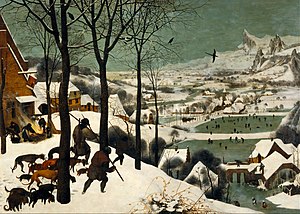 |
Season's greetings! |
| I hope this holiday season is festive and fulfilling and filled with love and kindness, and that 2018 will be safe, successful and rewarding...Modernist (talk) 12:00, 24 December 2017 (UTC) (UTC) |
}}
Happy Holidays
[edit]Happy Holidays
[edit] |
Season's greetings! |
| I hope this holiday season is festive and fulfilling and filled with love and kindness, and that 2019 will be safe, successful and rewarding...keep hope alive....Modernist (talk) 13:47, 24 December 2021 (UTC) |
Happy Holidays
[edit] |
Season's greetings! |
| I hope this holiday season is safe, festive and fulfilling and filled with love and kindness, and that 2022 will be safe, healthy, successful and rewarding...keep hope alive....Modernist (talk) 13:47, 24 December 2021 (UTC) |
Happy Holidays
[edit] |
Season's greetings! |
| I hope this holiday season is festive and fulfilling and filled with love and kindness, and that 2020 will be safe, successful and rewarding...keep hope alive....Modernist (talk) 15:54, 23 December 2018 (UTC) |
- Modernist 2000 (talk · contribs · deleted · filter log · SUL · Google) • (block · soft · promo · cause · bot · hard · spam · vandal) – User talk:Modernist 2000; Already taken- it's too close to my name since 2006...Modernist (talk) 21:44, 6 January 2020 (UTC)
Happy Holidays
[edit] |
Season's greetings! |
| I hope this holiday season is festive and fulfilling and filled with love and kindness, and that 2021 will be safe, successful and rewarding...keep hope alive....Modernist (talk) 15:54, 23 December 2018 (UTC) |
Happy Holidays
[edit] |
Season's greetings! |
| I hope this holiday season is safe, festive and fulfilling and filled with love and kindness, and that 2022 will be safe, healthy, successful and rewarding...keep hope alive....Modernist (talk) 19:08, 24 December 2022 (UTC) |
Cite error: There are <ref group=note> tags on this page, but the references will not show without a {{reflist|group=note}} template (see the help page).

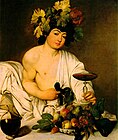
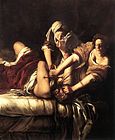
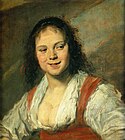
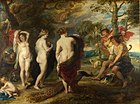


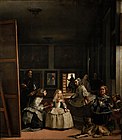






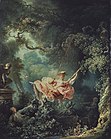
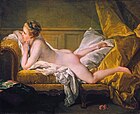







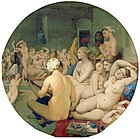




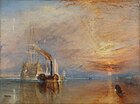




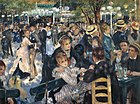

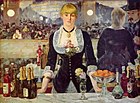





![The Blooming Plumtree (after Hiroshige), (1887) is a strong example of Vincent's admiration of the Japanese. [3]](http://upload.wikimedia.org/wikipedia/commons/thumb/a/a2/Van_Gogh_the_blooming_plumtree_%28after_Hiroshige%29%2C_1887.jpg/172px-Van_Gogh_the_blooming_plumtree_%28after_Hiroshige%29%2C_1887.jpg)
![Portrait of Père Tanguy, (1887), Vincent collected hundreds of Japanese prints and they can often be seen in the backgrounds of several of his paintings. In his 1887 Portrait of Père Tanguy several prints can be seen hanging on the wall behind the figure. [4]](http://upload.wikimedia.org/wikipedia/commons/thumb/5/5f/Van_Gogh_-_Portrait_of_Pere_Tanguy_1887-8.JPG/159px-Van_Gogh_-_Portrait_of_Pere_Tanguy_1887-8.JPG)
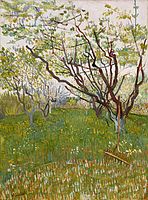
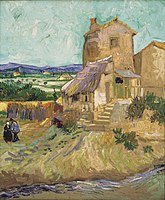


![The Sower, (1888), In Saint Rémy Van Gogh painted interpretations of Millet's paintings, like The Sower as well as his own earlier work. [5]](http://upload.wikimedia.org/wikipedia/commons/thumb/3/31/The_Sower.jpg/200px-The_Sower.jpg)
![Starry Night Over the Rhone, (1888). Hoping to also have a gallery for his work his major project at this time was a series of paintings including Still Life: Vase with Twelve Sunflowers 1888, and Starry Night Over the Rhone, (1888) all intended to form the décoration of the Yellow House. [6]](http://upload.wikimedia.org/wikipedia/commons/thumb/9/94/Starry_Night_Over_the_Rhone.jpg/200px-Starry_Night_Over_the_Rhone.jpg)




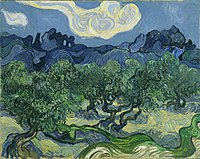

![The Round of the Prisoners, (1890). Painted after an engraving by Gustave Doré (1832-1883), in his book London. The face of the prisoner in the center of the painting and looking toward the viewer is Vincent. [7]](http://upload.wikimedia.org/wikipedia/commons/thumb/9/9e/Vincent_Willem_van_Gogh_037.jpg/157px-Vincent_Willem_van_Gogh_037.jpg)
![Still-Life with Straw Hat and Pipe, c.1881-1885, Kröller-Müller Museum. Characterized by smooth, meticulous brushwork and fine shading of colors, exhibiting a rare technical mastery. [8]](http://upload.wikimedia.org/wikipedia/commons/thumb/8/89/Vincent_Willem_van_Gogh_129.jpg/150px-Vincent_Willem_van_Gogh_129.jpg)
![Eugène Boch, (The Poet Against a Starry Sky), 1888, Musée d'Orsay, Paris. Dodge MacKnight introduced Vincent to Eugène Boch, a Belgian painter who stayed at times in Fontvieille (they exchanged visits in July). Eugène's sister Anna Boch, also an artist bought one of Vincents paintings.[9][10]](http://upload.wikimedia.org/wikipedia/commons/thumb/0/0f/Van_Gogh_Portrait_Eugene_Boch.jpg/111px-Van_Gogh_Portrait_Eugene_Boch.jpg)
![The Langlois Bridge, 1888. More or less a self-taught artist, Van Gogh's painting and drawing techniques are all but academic. Recent research has shown that works commonly known as "oil paitings" or "drawings" would better be called executed in "mixed-media", for example The Langlois Bridge still shows the highly elaborate underdrawing in pen and ink,[11] and several works from Saint-Rémy and Auvers hitherto considered to be drawings or watercolours turnt out to be painted in diluted oil and with a brush.[12]](http://upload.wikimedia.org/wikipedia/commons/thumb/d/d5/Vincent_Van_Gogh_0014.jpg/150px-Vincent_Van_Gogh_0014.jpg)
![Patch of Grass, 1887. Radiographical examination has shown that Van Gogh re-used older canvases to a much further extend than previously assumed - whether he really overpainted more than a third of his output, as presumed recently, will simply be verifiable by further investigations. In 2008, a team from Delft University of Technology and the University of Antwerp used advanced X-ray techniques to create a clear image of a woman's face previously painted, underneath the work Patch of Grass.[13][14]](http://upload.wikimedia.org/wikipedia/commons/thumb/2/26/Vincent_van_Gogh_-_Patch_of_grass_-_Google_Art_Project.jpg/150px-Vincent_van_Gogh_-_Patch_of_grass_-_Google_Art_Project.jpg)
![Almond Blossoms, 1890. In February 1890 soon after the birth of his nephew Vincent Willem, the son of Theo and Johanna, Vincent wrote in a letter to his mother: I started right away to make a picture for him, to hang in their bedroom, big branches of white almond blossom against a blue sky. [15]](http://upload.wikimedia.org/wikipedia/commons/thumb/9/90/Van_Gogh_Almond_blossom.jpg/150px-Van_Gogh_Almond_blossom.jpg)
![Skull of a Skeleton with Burning Cigarette, oil on canvas, 1885. Is this an act of sarcasm, defiance or fear or an example of Surrealism before its time? [16]](http://upload.wikimedia.org/wikipedia/commons/thumb/8/84/Skull_with_a_Burning_Cigarette.jpg/112px-Skull_with_a_Burning_Cigarette.jpg)
![The Blooming Plumtree (after Hiroshige), (1887) Van Gogh Museum. The Blooming Plumtree (after Hiroshige), is a strong example of Vincent's admiration of the Japanese ukiyo-e woodblock prints that he collected. His version is slightly bolder than the original.[17]](http://upload.wikimedia.org/wikipedia/commons/thumb/a/a2/Van_Gogh_the_blooming_plumtree_%28after_Hiroshige%29%2C_1887.jpg/129px-Van_Gogh_the_blooming_plumtree_%28after_Hiroshige%29%2C_1887.jpg)
![Portrait of Père Tanguy, (1887), Musée Rodin. Vincent collected hundreds of Japanese prints and they can often be seen in the backgrounds of several of his paintings. In his 1887 Portrait of Père Tanguy several prints can be seen hanging on the wall behind the figure.[18]](http://upload.wikimedia.org/wikipedia/commons/thumb/5/5f/Van_Gogh_-_Portrait_of_Pere_Tanguy_1887-8.JPG/119px-Van_Gogh_-_Portrait_of_Pere_Tanguy_1887-8.JPG)
![Cherry Tree, (1888), Metropolitan Museum of Art New York City. About The Cherry Tree Vincent wrote to Theo on April 21, 1888 and said he had 10 orchards and: one big (painting) of a cherry tree which I've spoiled.[19]](http://upload.wikimedia.org/wikipedia/commons/thumb/2/2c/Vincent_Van_Gogh_0021.jpg/111px-Vincent_Van_Gogh_0021.jpg)
![Van Gogh's Chair (1888), National Gallery London. When Gauguin consented to work and live in Arles side-by-side with Vincent, he started to work on the The Décoration for the Yellow House, probably the most ambitious effort he ever undertook.[20] Vincent did two chair paintings the other entitled Gauguin's Chair.[21]](http://upload.wikimedia.org/wikipedia/commons/thumb/9/96/Vincent_Willem_van_Gogh_138.jpg/117px-Vincent_Willem_van_Gogh_138.jpg)
![The Old Mill, (1888), Albright-Knox Art Gallery. One of seven canvases sent to Pont-Aven on October 4, 1888 as exchange of work with Paul Gauguin, Emile Bernard, Charles Laval, and others.[22][23]](http://upload.wikimedia.org/wikipedia/commons/thumb/4/47/Vincent_van_Gogh_%281853-1890%29_-_The_Old_Mill_%281888%29.jpg/124px-Vincent_van_Gogh_%281853-1890%29_-_The_Old_Mill_%281888%29.jpg)
![The Sower, (1888), Kröller-Müller Museum. In Saint Rémy Van Gogh painted interpretations of Millet's paintings, like The Sower as well as his own earlier work. Vincent was an admirer of Millet and he compares a painter's making copies to a musician's interpreting Beethoven.[24][25]](http://upload.wikimedia.org/wikipedia/commons/thumb/3/31/The_Sower.jpg/150px-The_Sower.jpg)
![Road with Cypress and Star, May 1890, Kröller-Müller Museum. Art historian Ronald Pickvance wrote: the painting Road with Cypress and Star represents an exalted experience of reality, a conflation of North and South, what both van Gogh and Gauguin referred to as an "abstraction".[26]](http://upload.wikimedia.org/wikipedia/commons/thumb/1/10/Van_Gogh_-_Country_road_in_Provence_by_night.jpg/117px-Van_Gogh_-_Country_road_in_Provence_by_night.jpg)
![Wheat Field with Cypresses, (1889), National Gallery, London. During the summer of 1889 honoring his sister Wil's request Vincent made several smaller versions of this painting.[27]](http://upload.wikimedia.org/wikipedia/commons/thumb/0/02/Vincent_Van_Gogh_0020.jpg/150px-Vincent_Van_Gogh_0020.jpg)
![View of Arles, Flowering Orchards (1889). In the spring of 1889 he painted another smaller group of orchards. In an April letter about them to Theo he said: I have 6 studies of spring, two of them large orchards. There is little time because these effects are so short-lived.[28]](http://upload.wikimedia.org/wikipedia/commons/thumb/9/95/Vincent_Van_Gogh_0018.jpg/150px-Vincent_Van_Gogh_0018.jpg)
![Olive Trees with the Alpilles in the Background, (1889), Museum of Modern Art, New York City. Referring to Olive Trees with the Alpilles in the Background, on or around June 18, 1889, in a letter to Theo, Vincent wrote: At last I have a landscape with olives and also a new study of a Starry Night.[29]](http://upload.wikimedia.org/wikipedia/commons/thumb/e/e8/Van_Gogh_The_Olive_Trees..jpg/150px-Van_Gogh_The_Olive_Trees..jpg)
![The Round of the Prisoners, (1890). Painted after an engraving by Gustave Doré (1832-1883), in his book London. The face of the prisoner in the center of the painting and looking toward the viewer is Vincent.[30]](http://upload.wikimedia.org/wikipedia/commons/thumb/9/9e/Vincent_Willem_van_Gogh_037.jpg/118px-Vincent_Willem_van_Gogh_037.jpg)
![Daubigny's Garden, July 1890, Auvers, Kunstmuseum Basel Basel. Barbizon painter Charles Daubigny moved to Auvers in 1861. Pictorially he put Auvers on the map, attracting artists Camille Corot and Honoré Daumier among others, and in 1890 Vincent van Gogh. Vincent made a second version of Daubigny's Garden in July 1890, and they are among his final works.[31]](http://upload.wikimedia.org/wikipedia/commons/thumb/6/6d/VanGogh_Daubigny.jpg/150px-VanGogh_Daubigny.jpg)
![1819-23 Spanish: Saturno devorando a su hijo [Saturn Devouring His Son] Error: {{Langx}}: text has italic markup (help)](http://upload.wikimedia.org/wikipedia/commons/thumb/8/82/Francisco_de_Goya%2C_Saturno_devorando_a_su_hijo_%281819-1823%29.jpg/109px-Francisco_de_Goya%2C_Saturno_devorando_a_su_hijo_%281819-1823%29.jpg)
![1819-23 Spanish: Átropos/Las Parcas [Atropos (The Fates)] Error: {{Langx}}: text has italic markup (help)](http://upload.wikimedia.org/wikipedia/commons/thumb/c/c8/Atropos_o_Las_Parcas.jpg/200px-Atropos_o_Las_Parcas.jpg)
![1819-23 Spanish: El Gran Cabrón/Aquelarre [Witches' Sabbath] Error: {{Langx}}: text has italic markup (help)](http://upload.wikimedia.org/wikipedia/commons/thumb/a/a8/El_Aquelarre.jpg/200px-El_Aquelarre.jpg)
![1819-23 Spanish: Duelo a garrotazos [Fight with Cudgels] Error: {{Langx}}: text has italic markup (help)](http://upload.wikimedia.org/wikipedia/commons/thumb/2/2b/Ri%C3%B1a_a_garrotazos.jpg/200px-Ri%C3%B1a_a_garrotazos.jpg)
![1819-23 Spanish: Dos viejos comiendo sopa [Two Old Men Eating Soup] Error: {{Langx}}: text has italic markup (help)](http://upload.wikimedia.org/wikipedia/commons/thumb/c/cf/Viejos_comiendo_sopa.jpg/200px-Viejos_comiendo_sopa.jpg)
![1819-23 Spanish: Vision fantástica/Asmodea [Fantastic Vision or Asmodeas] Error: {{Langx}}: text has italic markup (help)](http://upload.wikimedia.org/wikipedia/commons/thumb/e/e0/Vision_fant%C3%A1stica_o_Asmodea_%28Goya%29.jpg/200px-Vision_fant%C3%A1stica_o_Asmodea_%28Goya%29.jpg)
![1819-23 Spanish: La romería de San Isidro [A Pilgrimage to San Isidro] Error: {{Langx}}: text has italic markup (help)](http://upload.wikimedia.org/wikipedia/commons/thumb/e/ec/La_romer%C3%ADa_de_San_Isidro.jpg/200px-La_romer%C3%ADa_de_San_Isidro.jpg)
![1819-23 Spanish: El perro [The Dog] Error: {{Langx}}: text has italic markup (help)](http://upload.wikimedia.org/wikipedia/commons/thumb/3/38/Goya_Dog.jpg/118px-Goya_Dog.jpg)
![1819-23 Spanish: Dos viejos/Un viejo y un fraile [Two Old Men] Error: {{Langx}}: text has italic markup (help)](http://upload.wikimedia.org/wikipedia/commons/thumb/3/30/2_alte_M%C3%A4nner%2C_um_1821-23.jpg/89px-2_alte_M%C3%A4nner%2C_um_1821-23.jpg)
![1819-23 Spanish: Hombres leyendo [Men Reading] Error: {{Langx}}: text has italic markup (help)](http://upload.wikimedia.org/wikipedia/commons/thumb/3/34/Hombres_leyendo.jpg/102px-Hombres_leyendo.jpg)
![1819-23 Spanish: Judith y Holofernes [Judith and Holofernes] Error: {{Langx}}: text has italic markup (help)](http://upload.wikimedia.org/wikipedia/commons/thumb/2/27/Judith_y_Holofernes.jpg/110px-Judith_y_Holofernes.jpg)
![1819-23 Spanish: Mujeres riendo [Women Laughing] Error: {{Langx}}: text has italic markup (help)](http://upload.wikimedia.org/wikipedia/commons/thumb/7/71/Mujeres_riendo.jpg/102px-Mujeres_riendo.jpg)
![1819-23 Spanish: Peregrinación a la fuente de San Isidro/Procesión del Santo Oficio [Procession of the Holy Office] Error: {{Langx}}: text has italic markup (help)](http://upload.wikimedia.org/wikipedia/commons/thumb/6/65/Peregrinaci%C3%B3n_a_la_fuente_de_San_Isidro.jpg/200px-Peregrinaci%C3%B3n_a_la_fuente_de_San_Isidro.jpg)
![1819-23 Spanish: Una manola/La Leocadia [Leocadia] Error: {{Langx}}: text has italic markup (help)](http://upload.wikimedia.org/wikipedia/commons/thumb/3/36/La_Leocadia_%28Goya%29.jpg/176px-La_Leocadia_%28Goya%29.jpg)
















